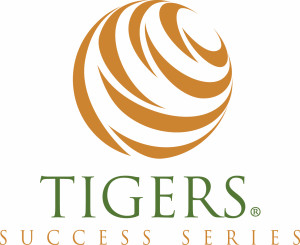
How to look past the resume to the person
The hiring process can seem daunting, especially if you’ve had bad luck with candidates in the past. The main thing to keep in mind when searching for candidates is that in the end, you are hiring people with past experience. Some of this experience has not been good. Candidates also have personal lives with different morals and values. So your company’s culture, values and mission play a key role in your decision hiring process. It is important for your revenue and your new hires productivity to fit in with your company’s standards and values, as well as compliment your existing employees. So as a hiring manager, it is important to have team building and hiring strategies in place to ensure a consistent and effective hiring process that brings in qualified candidates. Then it is up to your managers to make sure they are trained, treated fairly and rewarded in ways that are consistent with their performance. .
The following proven team building and hiring strategies help leaders and hiring managers to attract and keep top talent in their organizations.
Hire the person, not the resume.
The resume is an important hiring tool. It is the first look employers have into the person. But the resume can only tell part of the story. Learning more about who the person is and what he or she values is equally important. Skills can be taught and tested, and experience comes with the job. Therefore, hiring managers should look past this initial screening criteria and focus more on who the person innately is. A person’s character is an important indicator of their potential success as a candidate and how they will fit into the company’s culture. Learn what a candidate needs to feel successful. Learn if feedback and coaching supports their feeling of success. Learn if they find personal satisfaction when they support the success of those around. Learn if they find personal value in cooperating rather than competing with co-workers. Instead of only focusing on skills and experience, interview candidates to get a feel for who they are as a person and how they will fit into your organization. This will help you retain candidates for the long term.
Create a balanced team.
Everyone has their own set of strengths and weaknesses. When you’re building your team, it’s important to hire different types of people whose skills overlap and compliment one another. Personality and communication-style surveys vary somewhat in helping you identify strengths and weaknesses. Typically, there are five different core types of personalities according to one well known survey. The five types are direction, beauty, innovation, entertainment and efficiency, and an ideal team would consist of all five types of personalities. If your team is heavily composed of the efficiency type, your designs will be clear, but they may be lacking some key characteristics that can take it from forgettable to memorable. And if your team is too heavily biased on innovation, your team may be so focused on creating a lucrative new design that they miss deadlines. So as a hiring manager, focus on hiring someone in each category to get the most out of your team and then take the time to explore the differences with your team so the interdependence you create is based on appreciating the strengths everyone brings to the table. Then base your coaching on how to transform weaknesses into strengths.
Give your employees purpose.
Once you’ve hired the very best employees, how do you keep them satisfied with your organization and excited to stay? Leaders lose employees when they mishandle their training and development, fail to instill purpose and communicate in ways that violate employment laws and fair practices. The failure to give employees a sense of purpose in their work often results in higher absenteeism because there is no reason other than a paycheck to stick around. When purpose is in place, employees feel proud about their work and the company goals they are contributing to. They also do not want to let their co-workers down. In some companies, however, employers focus on quantity rather than quality, which means that the end result falls short of purpose leaving the employee with a lack luster result. When applied to customer service employees, that “neh” feeling drives future commitment, engagement and retention. Once this happens, it’s only a matter of time before your top employees start to look elsewhere for better employment opportunities that equate to improved feelings of personal satisfaction.
Develop meaningful relationships.
Most of the time, employees remain loyal to their managers and co-workers and not necessarily to their organization as a whole. So leaders have the important task of building trust and meaningful relationships among their team. The best place to start is by developing meaningful relationships through effective communication. As a leader, take the time to get to know your employees on a personal level, be thoughtful of their struggles and feelings and treat all of your employees fairly. All of these strategies promote a trusting relationship between leaders and their employees, which is essential because organizations cannot succeed without trust, interdependence, genuineness, empathy, risk and success.
The hiring process must keep pace with changing times as each new generation of candidates enters the workforce. With each generation, new team building and hiring strategies are required. But one effective way that leaders can build better teams is by focusing on the person, and not just the resume. Ways that leaders can attract and keep top talent include assessing a candidate’s character during the interview, creating a balanced team composed of different personality types; giving your employees a sense of purpose with their work; and developing meaningful relationships within the team and with your team members to keep them satisfied with their leaders, co-workers and your organization.
How to improve team trust after people are disappointed
Copyright TIGERS Success Series, Inc. by Dianne Crampton
 About TIGERS Success Series, Inc.
About TIGERS Success Series, Inc.
TIGERS® Success Series is a Bend, Oregon Leadership and Team Improvement Consultant that helps committed leaders build more cooperation among employees and collaboration between departments for improved growth, revenue, purpose and impact.
We do this by deploying the TIGERS team process that improves workforce behaviors that are anchored by trust, interdependence, genuineness, empathy, risk resolution and success. Providing diagnostics and customized team interventions including the Melting Your Stress within 30 Days program, you can improve both work culture and transform your adequate teams and employees into exceptional ones.
We also license and train HRD Executives, Project Managers, Managers, Trainers and Team Consultants in the use of our award winning resources including the Melting Your Stress within 30 Days program. For more information, call 1+ 541-385-7465.
